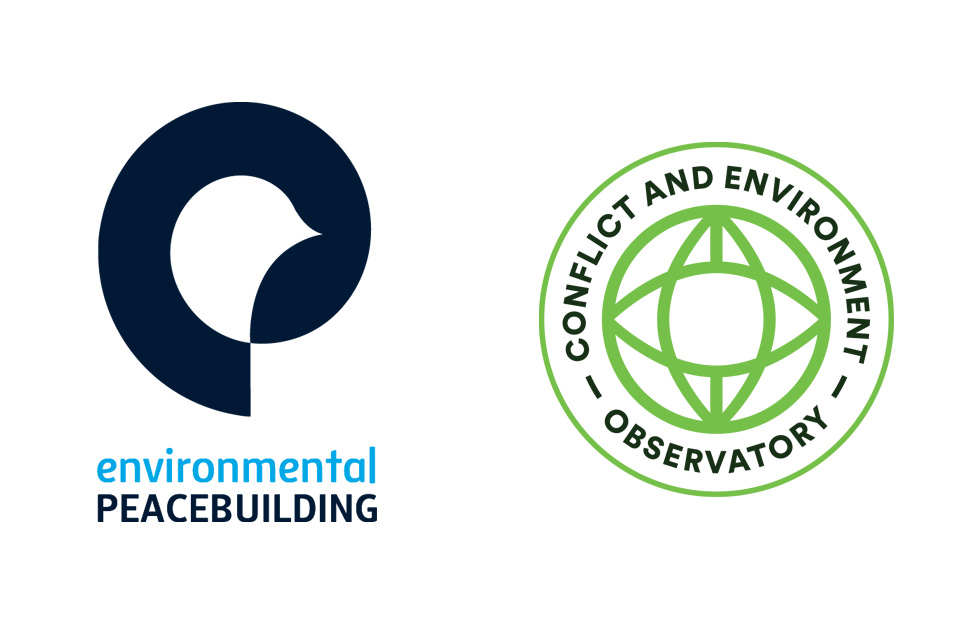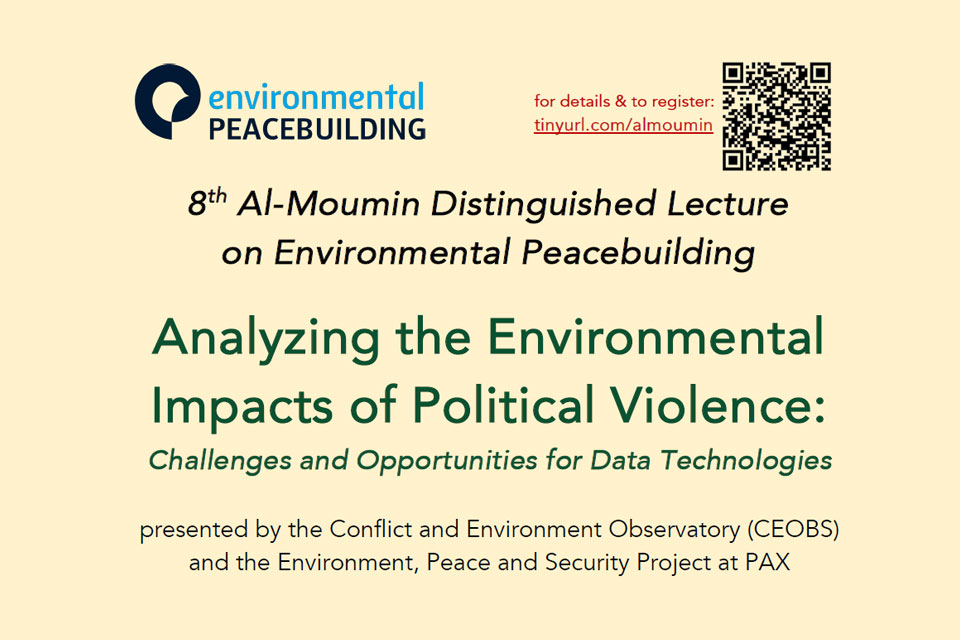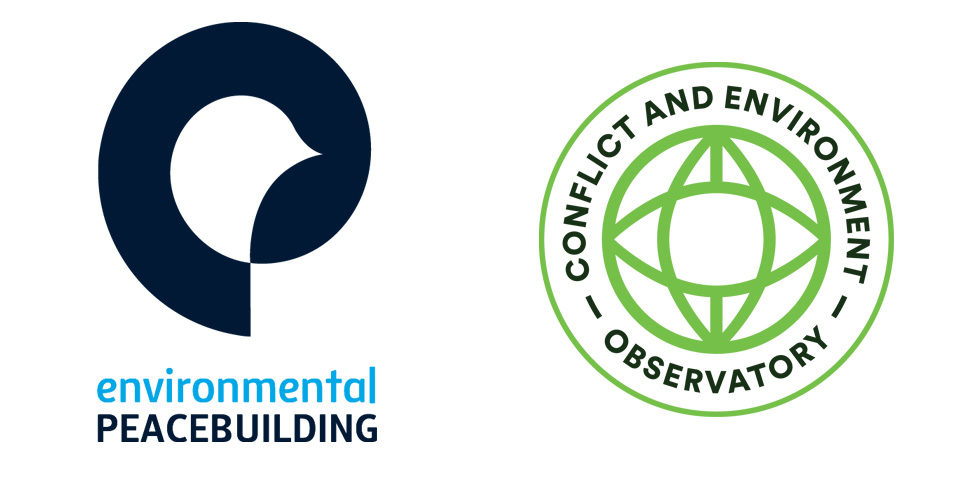How new technologies can create change through story telling.

CEOBS and the PAX Environment, Peace, and Security Project jointly received 2023’s Al-Moumin Award from the Environmental Peacebuilding Association for their “ongoing leadership in monitoring, quantifying, and redressing the environmental impacts of war”. In his remarks accepting the award on CEOBS’ behalf, Doug Weir discussed how CEOBS works to challenge the status of the environment as a silent victim in conflicts.
Acceptance speech made on behalf of CEOBS on 19th September 2023. For more on this year’s Al Moumin Award, see CEOBS jointly awarded Environmental Peacebuilding Association’s Al-Moumin Award.

Who cares about the environment in war?
Good afternoon. Before Eoghan provides some thoughts on the existing and potential opportunities that new technologies are creating, and we hear from our Yemeni and Tigrayan colleagues, I would like to speak briefly about what motivates us to do what we do.
Throughout this journey, we have always been drawn to the underlying problems. Working on depleted uranium weapons, that meant examining just why the weapons, their use and their post-conflict management were problematic. It also invited questions of why the toxic remnants of war received far less attention than the explosive remnants of war.
Later, and having zoomed out in response to that question, working on toxic remnants of war allowed us to examine and begin to articulate this deficit in attention, and to start to address it through research and advocacy. But it also foregrounded a more profound question – who cares about the environment in war?
Too few people and institutions, as it transpired.
The silent victim
The cliché of the environment as a silent victim of conflict didn’t feel like something that we should just take for granted. Particularly as this lack of attention lay at the heart of many of the recurring problems that we could see in areas affected by conflicts. Whether it was the environmentally permissive legal framework, or harmful military conduct, the lack of attention and resources for post-conflict environmental recovery, or failures to recognise that humanitarian and environmental considerations were intimately connected – the lack of visibility was crucial; its consequences profound.
We were students of UNEP’s post-conflict environmental assessments, which had done so much to help document harm and to begin to set the wheels of policy change in motion. Their chief weakness, as we saw it, was that they were limited in time and space. However, new technologies were providing answers to that, expanding the temporal and spatial scope of data collection, and widening access and participation for remote assessments.
These were, and remain, exciting developments but these technologies should not be detached from purpose. At the start of the 2010s, one such purpose was becoming clear. Several years of research and analysis by UNEP had helped amplify what legal experts had long argued about the state of the legal framework protecting the environment in relation to armed conflicts: that it was insufficient to protect both people and the environment. A recommendation in a collaborative report on the framework would lead to the UN’s International Law Commission adopting the topic, in what would become a process, and which in 2022, would eventually produce a set of 27 legal principles – the PERAC principles.
I freely accept that this is a considerable simplification.
From start to finish, policy processes like that on PERAC are highly reliant on knowledge flows. In the case of the emerging legal framework, data was important for informing the legal debate, and for determining whether the proposed principles made sense out in the real world, it formed the basis of the briefings that we shared with states, and also helped identify where the draft principles could be improved to enhance protection.
Environmental modification techniques
But on its own, a handsome new legal framework was never going to make people care about the environment in conflict. For things to change, and to borrow a term from the PERAC principles, we needed to develop and deploy a whole suite of techniques to modify the environment in which we were working, and which targeted a range of stakeholders and fora.
We could work at a high level, with states and UN agencies. For example, on UN resolutions that seek to protect and enhance UNEP’s mandate to work on conflicts, or where their successful passage can help reinforce other complementary processes.
We could work to mainstream peace and security considerations in environmental processes, whether they are on climate, biodiversity or pollution. This might mean ensuring that meetings like those under the UN Framework Convention on Climate Change, finally have to take notice of the means through which conflicts and militarism influence emissions.
We could work with academia and research institutes, to help explore new ways of understanding the environmental dimensions of armed conflicts and military activities. Along the way, engaging with the next generation of researchers to help inspire future work.
We could work with journalists to help them tell stories about how the environment is affected by war, providing them with research, or simply with advice, as they pursue their own investigations. We could be on hand, to check facts.
We could work with the humanitarian disarmament community to help them embed the environment in their operations and advocacy. In this way, reaching the first responders clearing mines and unexploded ordnance, and who may be able to fulfil an important role in data collection on the ground. And we would while simultaneously be engaging with the people who are among the last to leave, and who bear witness to the long-term consequences of conflicts on land use and environmental governance.
Back in 2016, it was already clear that environmental modification techniques like these would require an organisation to help pursue them. With the support of the Joseph Rowntree Charitable Trust, Norwegian People’s Aid, the Norwegian Ministry of Foreign Affairs, LUSH and our volunteer trustees, we were able to make this happen. We are deeply indebted to them for their help and encouragement.
By 2017, we had our blueprint. Since then, it has been our staff, both past and present who have built CEOBS, under the watchful and supportive eye of our trustees. Our development has also been deeply enriched by our collaborations with a diverse range of partners; to you too, our thanks.
Making stories
Nevertheless, a large part of the reason that we are here today has been that we have been lucky. Our work, and the profile of conflict and the environment more generally, have benefitted hugely from a rising tide of environmental concern across society. Not only was the timing lucky, but we were also lucky with our funding. It provided us several years of space to be curious, and to explore and to push the limits of what could be understood remotely.
From curiosity, we could start to make stories. Repeat stories enough, and they can become policies, and, eventually, change.
Stories and ideas are vital, and can be incredibly powerful but as environmentalists we often struggle with complexity. When we look at a landscape, it’s easy to get absorbed into seeing all of its processes and constituents, with the landscape in its simplest form lost. And so it is that when we try to communicate our work to journalists their eyes may at times begin to glaze over. Or we tie ourselves in knots trying to draft a press release, which contains a killer first paragraph neatly summarising the 30-page report.
The environment is complex, conflicts are chaotic, and the interactions between societies, warfare and the environment are often messy. This means that if we are to modify the environment, it is vital that we can make complex narratives accessible.
Back in 2018, when we launched CEOBS, and our website, our first blog post was on a dilapidated super-tanker moored off Yemen. The blog examined a call for help from the Yemeni authorities to the UN, and the potential impact of a catastrophic spill of 1.14 million barrels of crude oil into the Red Sea. Naturally, it emerged that the tanker was moored close to the reefs and mangroves of a nominated marine protected area.
But what does a 1.14 million barrel oil slick even look like? To try and get a handle on this for ourselves, and for the benefit of our readers, we calculated that it was four times the amount of oil spilled in the Exxon Valdez disaster.
It took several months but that blog post was picked up by the Atlantic Council. They remain much bigger and louder than we were. Soon enough the story was in The Guardian, and then it was everywhere, as the tale of the FSO SAFER went global. And everywhere you looked, journalists had used the Exxon Valdez as a reference.
A few weeks ago, The Guardian summed up the successful UN-led salvage operation, which had brought partial closure to the saga of the FSO SAFER:
Yemen: UN removes 1m barrels of oil from ageing tanker to avert environmental catastrophe Tanker contained four times as much oil as was spilled in 1989 Exxon Valdez disaster off Alaska
I was 13 in 1989 when the Exxon Valdez ran aground in Prince William Sound, Alaska, spilling 11 million gallons of oil. Instinctively, I know it was bad but don’t really understand what 11 million gallons of oil looks like, very few of us do. Nor can I convert that to barrels in my head. An Exxon Valdez is not the SI unit for oil spills.
Yet it can become a meme.
In the case of the FSO SAFER, it was a meme that helped a wide range of stakeholders to communicate the urgency of an environmental threat. In the years that followed, the SAFER saga spilled across pages and pages of print, ultimately washing up in the UN Security Council, and even contaminating the negotiations aimed at resolving Yemen’s brutal conflict.
Presumably the Exxon meme resonated at an instinctive or cultural level, given that so few of us are oil spill specialists. And, while it played only a bit part in a powerful story around a serious and complex environmental threat, it shows that stories, and the memes they contain, can help catalyse actions, and catalyse change.
But to tell those stories we need data.
Challenging the cliché of the silent victim
New remote data technologies are providing us with the tools that we need to be able to tell those stories in ever more detail, and with ever increasing speed.
The world seems no more peaceful now than it was when we first dreamt up the idea of CEOBS in an old mill in Manchester. Environmental stresses are increasing globally, leaving communities and ecosystems damaged by conflicts ever more exposed to the consequences of environmental degradation. It has never been more important to monitor environmental change in areas affected by conflict. And throughout the cycle of armed conflicts.
Post-conflict environmental assessments are important for understanding the environmental consequences of war. But they will also increasingly form the basis for guiding sustainable recovery, where there is the knowledge, wisdom and opportunity to implement it. This includes building in resilience to environmental stresses.
By telling stories before those assessment teams arrive, we can not only help guide where they visit but we can also help ensure that those assessments take place. If people do care about the environment in war, they are more likely to fund efforts to understand and address harm, and to assist those affected.
And so, to conclude. Taken together, data technologies and storytelling are a powerful environmental modification technique. Used alongside the other research and advocacy techniques at our disposal, they hold open the promise of dismantling the structural and cultural barriers that created and sustained the cliché of the environment as a silent victim of conflict. The environment is finding its voice, and progress here holds open the promise of progress elsewhere, particularly around questions of accountability and behavioural change.
Before I finish, I would like to thank our hosts King’s College London’s Department of Geography, and in particular Professor Rob Francis. And I would of course like to thank the Environmental Peacebuilding Association for this award, on behalf of all of our staff and trustees, past and present, and our many project partners and collaborators.
Doug Weir is CEOBS Research and Policy Director.





